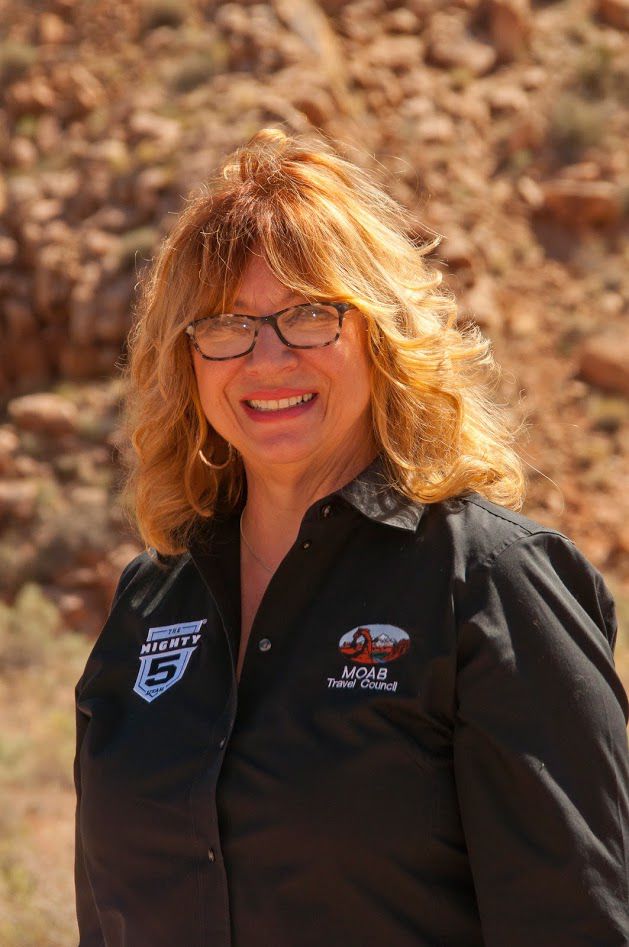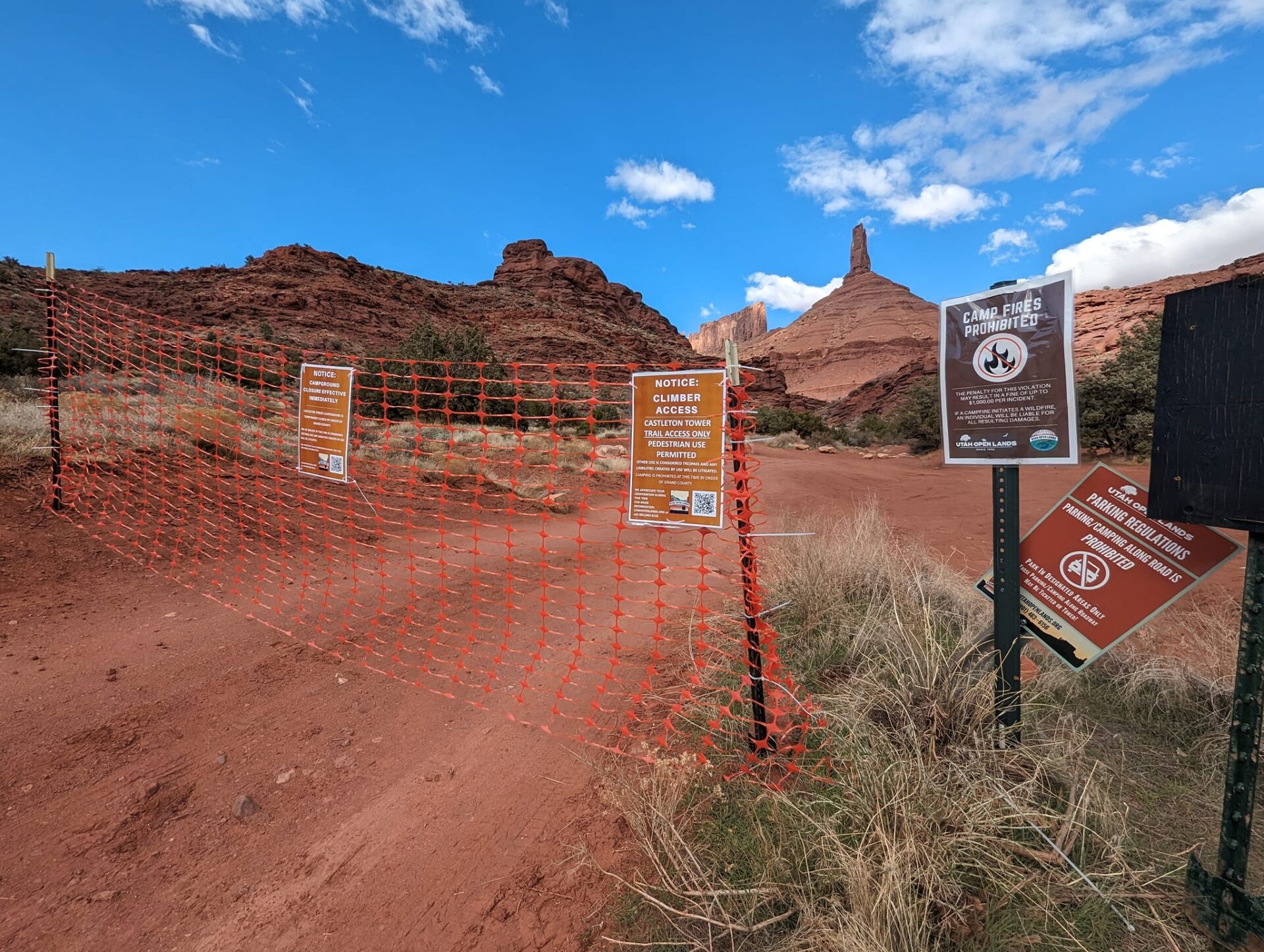Amid a vibrant tourism economy, Grand County officials are seeking ways to build infrastructure to meet an increase of visitors, while also acknowledging grievances of some area residents who wish to scale back tourism marketing.
Visitation at the national parks in the Moab area was down in 2017, according to recent information shared by the Moab Area Travel Council, but Grand County remained fourth out of 29 Utah counties for total transient room tax (TRT) collected — $5.17 million.
The travel council’s executive director, Elaine Gizler, presented the travel information to the Grand County Council on July 3. Grand County has held fourth place for the past few years, Gizler said.
“We are moving forward and it looks like we are going to have another successful year with TRT, the way that we’re trending,” Gizler said. “We’re very hopeful that we’ll continue to bring in the $5 million to the county, and we’re tracking it and it looks like we’re going to be there.”
Gizler’s report showed that visitation to Arches National Park fell by three percent over 2017, with a reported 1.53 million visitors. At Canyonlands National Park, visitation decreased by four percent, with 742,271 visitors for the year. But at Dead Horse Point State Park, visitation is reported to have increased by 28 percent in 2017, with 560,783 visitors.
Spending by domestic Visa cardholders visiting the area put $133,072,458 into Moab’s local economy in 2017, Gizler said, with the average cardholder spending $172 in the city. The top spenders came from Denver, Boulder, Provo, Orem, San Francisco and Oakland, the travel council’s report to the Grand County Council said.
Top places by spending are dining and restaurants with about $29 million, and lodging, at $19 million. Grocery stores and supermarkets brought in $11 million, while tourist attractions accounted for $3.8 million.
The report shows that there are 4,260 overnight rentals in Grand County, with more than half being hotel lodging rooms — 2,456 rooms, including the up-and-coming Hyatt and the Hoodoo hotels that are currently under construction. In addition, other overnight rentals include 104 individual condos, 43 guest houses and 78 bed and breakfasts (B&Bs). Property management companies operate another 370 properties, the report said. As for commercial RV sites, there are 784, not including Bureau of Land Management (BLM) sites, the report said, and there are 142 cabins and 283 commercial tent sites.
Despite the slight decreases in visitation reported at the nearby national parks in 2017, Moab and Grand County have seen an overall increase in visitation over the years, with an estimated 3 million visitors coming to the area each year. The increase has put the Moab Area Travel Council in a “difficult position,” said Grand County Council vice chair Curtis Wells.
Wells also used the word “unique” to describe the situation in Grand County, because he said the area has a mature travel and tourism economy and ranks fourth in the state for TRT revenue, but doesn’t have the infrastructure to support the increase in tourism.
“It’s not a representation of our budgets or our infrastructure. I want you to know that I support you, and I understand the dynamics are in play,” Wells told Gizler during the council meeting. “It’s important for members of the public to know that this council, long before I ever showed up, is doing everything they can within the confines of state law to use TRT money to mitigate the impacts, and that’s something that has happened and will continue to happen. But, there is such a thing as over-commercialization, and that’s the conversation I think we’re getting into, is, where do you draw that line?”
At fourth place in TRT revenue in the state, Grand County falls beneath Washington County, which had just two percent more revenue, Wells said, but the economy in Grand County is much different. Washington County, Wells said, has a larger tax-base with Zion National Park and a large retirement community to help manage infrastructure to support tourism.
Wells used an analogy for Grand County: “We really are strapped. We’re a 200-pound person with a bone structure and a muscle structure that’s carrying the weight of a 400- to 500-pound human being — that’s a fact, and it’s important for us to acknowledge that.”
Collecting and managing the TRT revenue is guided by the parameters in the Utah code (Title 59, Chapter 12), Wells said, which aren’t flexible to accommodate Grand County’s unique economy. Recently, that has caused “a debate filled with vitriol and finger-pointing,” Wells said.
“There are segments of this community — it doesn’t fall on party lines — who would like to see some preservation of the valley, and they’d like to see us proceed in a sustainable fashion, and this is where we came to last year over the transient room tax,” Wells said to Gizler. “And what one of the most important things I think we can do, and that’s what I think you should take to your board, is we have got to come to a compromise on that state law, because there’s going to continue to be efforts to build out flexibility in that law, and I think it’s just a sharing and acknowledging of facts that we don’t want to lose tourism.”
Wells commended the efforts of the travel council, but also suggested that Utah’s TRT laws need to be amended.
“The tourism marketing folks have done a phenomenal job. It’s done really well for our economy, but there is such a thing as quality over quantity,” Wells said. “The elements of the community that are getting frustrated, they are not just Democrats, they’re not just Republicans, they’re not just generational locals, they’re not just transplants. It’s a group of people that see the most beautiful place on Earth get sold out, so you know, that’s the starting place. If we can shake hands on how do we amend this law so that we have the flexibility of the governing body to scale back marketing volumes when the tourism volumes are up, and if we start to lose market share, then to dial that promotional money up, and I think these TRT volumes are going to continue to go up.”
In response to the community’s frustration and ‘vitriol,’ Grand County Council chair Mary McGann asked the council to draft a letter to the public to inform people about the county council and travel council’s efforts to support the travel and tourism industry while also working to offset the impact of visitation within the confines of state law.
“Between now and January, we as a body should work closely with our county council to come up with what we think would serve a mature, rather than a fledgling, tourist economy,” McGann said. “They should be treated differently. The needs are very different. When Moab first started to become a tourist economy, we needed that much money to put up for transient room tax. Now it could be changed. I would like to propose we get a letter or a column to the newspaper saying that, explaining, something that says we are not comfortable with people attacking employees for doing their job the way that they are required to do their job, we need some way to communicate that to the public.”
“I would appreciate that support from council,” Gizler said. “It is horrible. It’s very frightening today when you have people who are so volatile and you’re experiencing that, and believe me, I’m not paid enough money to take on that kind of anger from people.”
Council member Wells addresses community ‘vitriol’ and calls for law amendment
“We really are strapped. (Grand County is) a 200-pound person with a bone structure and a muscle structure that’s carrying the weight of a 400- to 500-pound human being — that’s a fact, and it’s important for us to acknowledge that.”




